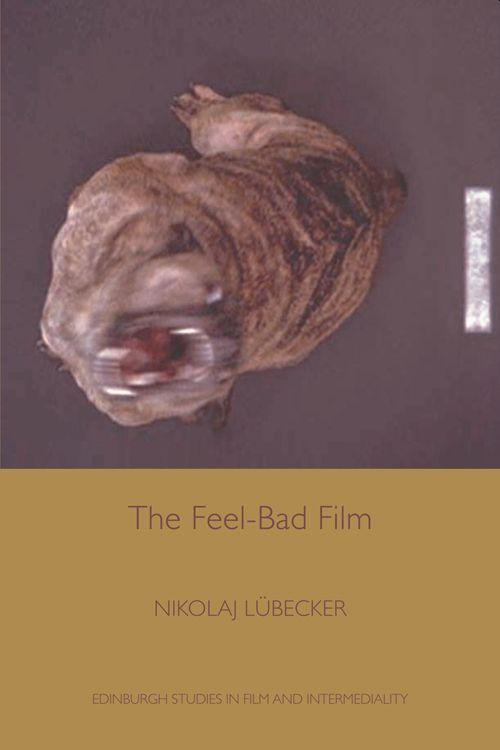Bücher versandkostenfrei*100 Tage RückgaberechtAbholung in der Wunschfiliale
15% Rabatt11 auf ausgewählte eReader & tolino Zubehör mit dem Code TOLINO15
Jetzt entdecken
mehr erfahren
Zustellung: Di, 09.09. - Sa, 13.09.
Versand in 2 Wochen
VersandkostenfreiBestellen & in Filiale abholen:
In recent years some of the most innovative European and American directors have made films that place the spectator in a position of intense discomfort. Systematically manipulating the viewer, sometimes by withholding information, sometimes through shock or seduction, these films have often been criticised as amoral, nihilistic, politically irresponsible or anti-humanistic. But how are these unpleasurable viewing experiences created? What do the directors believe they can achieve via this 'feel-bad' experience? How can we situate these films in intellectual history? And why should we watch, study and teach feel-bad films? Answering these questions through the analysis of work by directors such as Lars von Trier, Gus Van Sant, Claire Denis, Michael Haneke, Lucille Hadzihalilovic, Brian de Palma, Bruno Dumont and Harmony Korine, The Feel-Bad Film invites readers to consider cinematic art as an experimental activity with ethical norms that are radically different from the ones we would hope to find outside the movie theatre. Nikolaj Lübecker is Associate Professor in French at the University of Oxford, Fellow of St John's College. He teaches Film Studies and Modern French Literature.
Inhaltsverzeichnis
List of illustrations
Acknowledgements
Introduction
Part 1: Assault
1.1 The Inner Bastard: von Trier's Dogville
1.2 Ethics via the Body: Funny Games, Daisy Diamond and Jacques Rancière
1.3 Going too far? de Palma's Redacted
Part 2: Unease
2.1 Buying a bunch of radishes: Van Sant's Elephant
2.2 An Ethics of Suspension: I Can't Sleep, Hidden and Judith Butler
2.3 Embracing Childhood: Hadzihalilovic' Innocence and Brakhage's Kindering; Coda: Östlund's Play, Between Assault and Unease
Part 3: Transgression, Transgression
Introduction: Third Generation Avant-Garde?
3.1 The Avant-Garde as Tragedy: Dumont's Twentynine Palms
3.2 Desperation Films: Code Blue, In My Skin and The Bastards
3.3 The Avant-Garde as Farce: Korine's Trash Humpers
Conclusion
Bibliography
Filmography
Index
Acknowledgements
Introduction
Part 1: Assault
1.1 The Inner Bastard: von Trier's Dogville
1.2 Ethics via the Body: Funny Games, Daisy Diamond and Jacques Rancière
1.3 Going too far? de Palma's Redacted
Part 2: Unease
2.1 Buying a bunch of radishes: Van Sant's Elephant
2.2 An Ethics of Suspension: I Can't Sleep, Hidden and Judith Butler
2.3 Embracing Childhood: Hadzihalilovic' Innocence and Brakhage's Kindering; Coda: Östlund's Play, Between Assault and Unease
Part 3: Transgression, Transgression
Introduction: Third Generation Avant-Garde?
3.1 The Avant-Garde as Tragedy: Dumont's Twentynine Palms
3.2 Desperation Films: Code Blue, In My Skin and The Bastards
3.3 The Avant-Garde as Farce: Korine's Trash Humpers
Conclusion
Bibliography
Filmography
Index
Produktdetails
Erscheinungsdatum
19. Mai 2015
Sprache
englisch
Untertitel
Sprache: Englisch.
Seitenanzahl
200
Autor/Autorin
Nikolaj Lübecker
Verlag/Hersteller
Produktart
kartoniert
Gewicht
339 g
Größe (L/B/H)
233/154/12 mm
ISBN
9780748697991
Entdecken Sie mehr
Bewertungen
0 Bewertungen
Es wurden noch keine Bewertungen abgegeben. Schreiben Sie die erste Bewertung zu "The Feel-Bad Film" und helfen Sie damit anderen bei der Kaufentscheidung.









